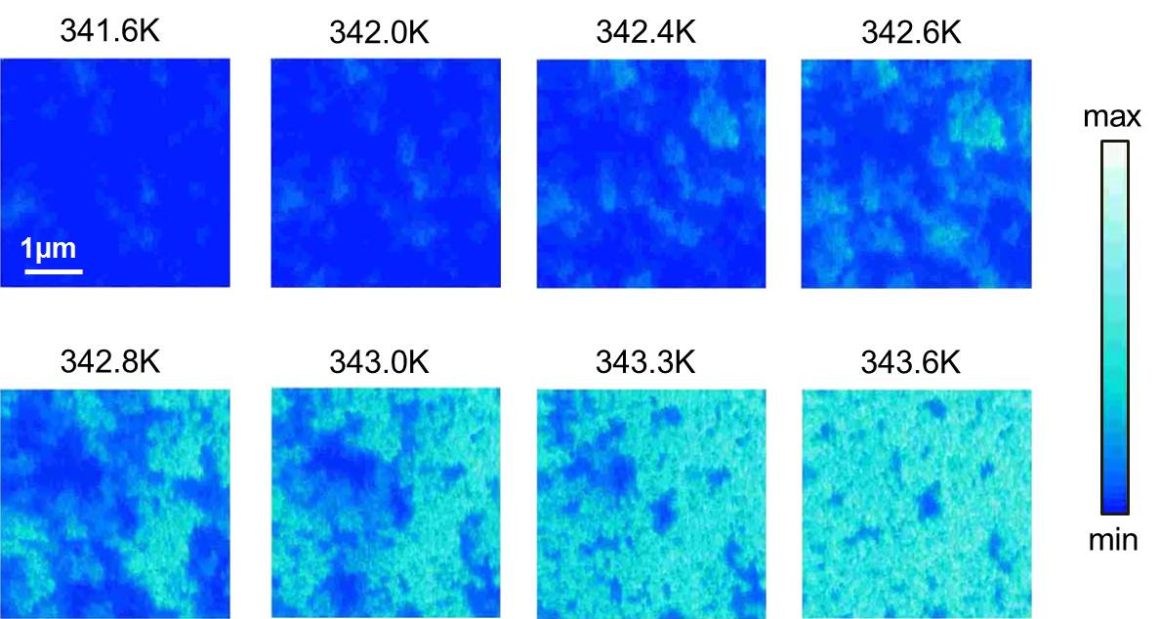The high spatial resolution of infrared near-field microscopy allows for detailed studies of phase transitions in materials like the insulator-to-metal transition of vanadium dioxide (VO2) thin films.
Infrared near-field microscopy provides novel insights into the temperature-induced phase transition of VO2. Near-field images directly confirm the percolative nature of the VO2 thin film phase transition where insulating and metallic phases coexist in the temperature range where the transition occurs. Images of a VO2 film (wavelength 10.75µm) recorded for a controlled temperature change between ca. 340K to 343K reveal how nanoscale metallic puddles are formed, exhibiting a higher amplitude signal for metallic sample regions compared to insulating. Analysis of the metallic puddles extension/geometry at the onset of the phase transition allows in combination with effective medium theory calculations to extract a divergent effective carrier mass.
The images recorded for the VO2 thin film phase transitions demonstrate that IR near-field microscopy allows detailed studies of nanoscale phase transitions in materials. The technique cannot be only applied to VO2-related phase transitions, but to all phase changes where a dielectric/metallic or amorphous/crystalline transition (like in GeSbTe alloys) occurs.


